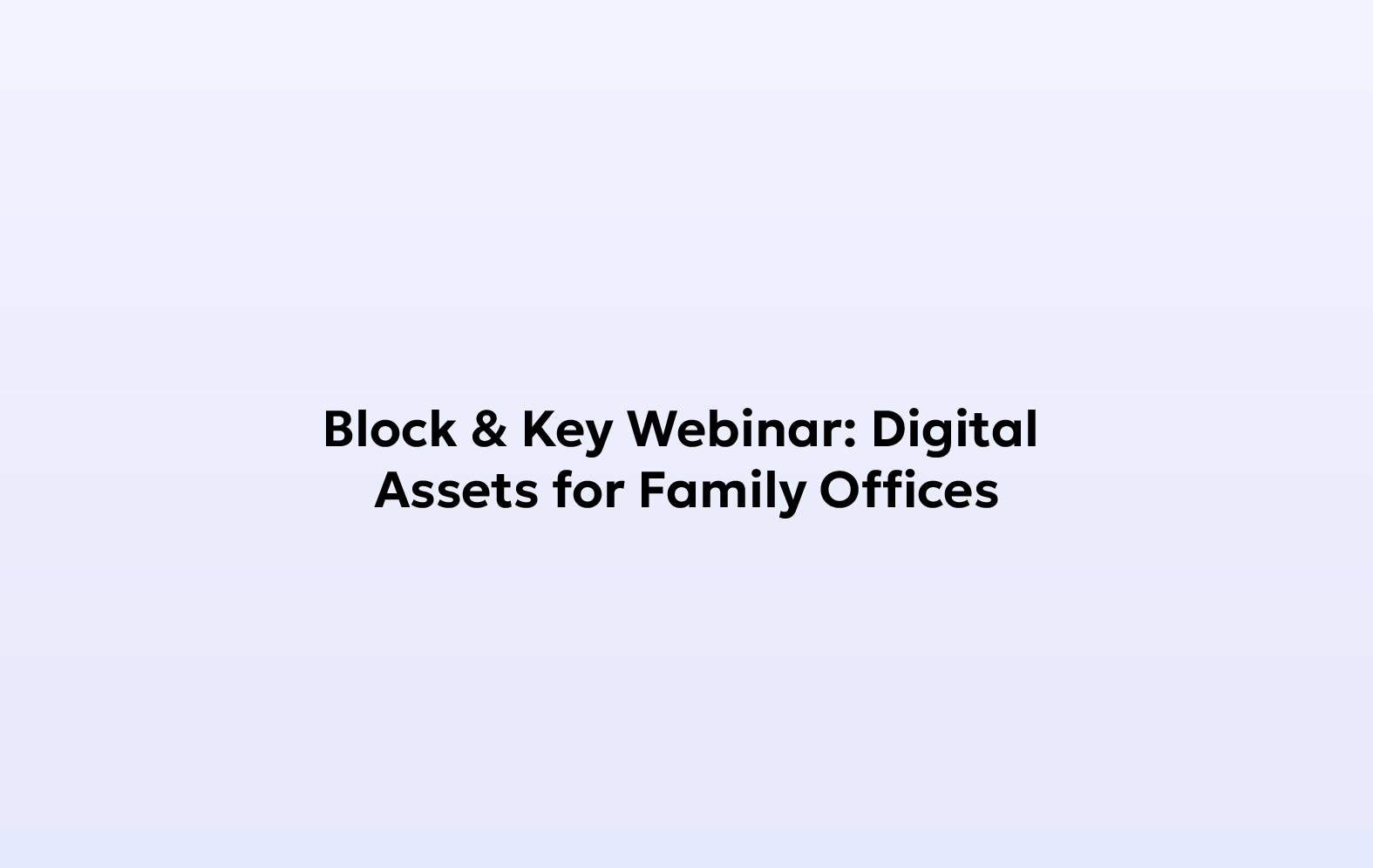Although there are certain parallels between Ethereum/Bitcoin-based crypto wallet and conventional online bank accounts, it’s important to recognize that cryptocurrency protocols operate in a fundamentally distinct manner compared to platforms such as mobile wallets and traditional online banking systems.
For instance, cryptocurrency transactions are permanent and cannot be reversed, necessitating significantly more stringent security measures to safeguard the digital assets stored within a wallet. However, this is not the case with most traditional digital payment and banking systems.
Still, if you’re familiar with the traditional wallets and banking system, then setting up and operating crypto wallet won’t be a hassle for you.
Types of Crypto Wallets
There are four major types of crypto wallet currently available in the market:
Software Wallets
Software wallets are available as both desktop and smartphone applications. These cryptocurrency wallets are installed on personal computers or mobile devices and enable users to access their cryptocurrency holdings, conduct transactions, check balances, and more. Some software wallets also offer additional features, such as integration with cryptocurrency exchanges, when provided by exchange-created crypto-wallet apps.
Numerous mobile wallets present in existing crypto wallet infrastructure support immediate in-store purchases through methods like near-field communication or QR code scanning. Software wallets are often referred to as “hot wallets,” or hot wallet crypto storage platform and they are typically free to use, making them an appealing choice for investors and hodlers.
Hardware Wallets
Hardware wallets, commonly known as “cold wallets,” are physical devices that closely resemble USB drives in appearance and function. These crypto wallet hardware devices securely store the private keys required to access digital asset holdings on a blockchain or any web3.0 protocol.
Hardware wallet for cryptocurrency is considered by many to be the most secure way to store digital assets because they are offline and physically accessible. Unlike hot wallets, which are constantly connected to the internet, hardware wallets provide an added layer of security against remote hacking attempts – that makes it the best crypto wallet in India and across the globe.
However, hardware wallets do come with a few downsides. They can be relatively expensive, especially products from reputable manufacturers like Ledger and Trezor. Additionally, if you lose your hardware wallet, it can be a critical situation. It’s crucial to set up a recovery seed when using a hardware wallet to ensure you can regain access to your cryptocurrency in case of loss.
Custodial Wallets
Custodial wallets are favored for their simplicity and ease of use. They are often referred to as “exchange wallets” because they are hosted directly on cryptocurrency exchanges where users purchase their digital assets. They are considered to the most convenient crypto wallet India. If you’ve ever bought cryptocurrencies on centralized exchanges and opted to keep your holdings there, you’ve essentially used a custodial wallet – one that is offered by the exchange.
With custodial wallets, the exchange typically manages your private keys on your behalf. However, since this private information is stored online, it can increase the risk of successful cyberattacks. Additionally, custodial wallets may have limited functionality, limiting your ability to use your cryptocurrency for certain purposes, such as buying NFTs.
Non-Custodial Wallets
Non-custodial wallets provide users and crypto holders with full control over their cryptocurrency holdings. These cryptocurrency wallets often offer greater flexibility and functionality compared to custodial wallets, making them a preferred choice for activities like purchasing NFTs or staking cryptocurrencies.
In a non-custodial wallet, you are the sole custodian of your private key, and as such, it is your responsibility to take strong security measures to protect it. Losing your private key can result in the permanent loss of access to your cryptocurrency holdings.
How to Set up a Crypto Wallet?
Today, setting up any type of cryptocurrency wallet account is quite straight forward. When it comes to investing in or using cryptocurrencies, opening a cryptocurrency wallet account is a crucial first step. To establish a crypto wallet Indian or global account, you’ll need to consider a few key factors, such as choosing a crypto wallet infrastructure provider, providing personal information, and having some cryptocurrency ready to store in your wallet. Whether you opt for crypto wallet hardware, software, or paper wallet, this guide will assist you in understanding the prerequisites for opening and setting up a crypto wallet account.
Enter Personal Information for KYC/ AML
To initiate all types of crypto wallet account, you will typically be required to provide the following personal details to adhere to anti-money laundering (AML) and know-your-customer (KYC) regulations:
- Full name
- Email address
- Phone number
- Home address
Public and Private Keys – Explained
To operate both the cold and hot wallet crypto platform effectively, you must grasp the concept of public and private keys:
Public Key:
The public key serves as your wallet’s address, enabling other users to send cryptocurrency to you. It’s similar to sharing your personal mailing address for receiving mail, but not password.
Private Key:
Think of your private key as the secret password to your wallet, a secret that only you should possess and should not share. If someone gains access to your private key, they gain control over your funds and assets. These keys are pivotal to the security and functionality of your crypto currency wallet, so safeguarding your private key is of paramount importance.
Difference between individual and institutional wallet setup For individual:
Research and Select a Wallet
Begin by conducting thorough research on various types of crypto wallets. Consider essential factors like wallet security, compatibility with your operating system, user experience, and community reputation. Seek out reputable crypto wallet infrastructure providers and read reviews to make an informed choice.
Once you’ve made your selection, visit the official website of your chosen crypto wallet hardware/ software provider. Always ensure you’re on the legitimate website by verifying the URL, as fraudulent sites may closely resemble the authentic ones. If you opt for the best crypto wallet in India – that is a hardware crypto wallet, also confirm that it arrives sealed, and the packaging remains untampered with.
Install the Wallet
For software crypto currency wallets, locate the download section on the cold/ hot wallet crypto provider’s website and choose the version compatible with your operating system. After downloading the wallet software, follow the installation instructions provided by the wallet provider.
If you’ve acquired a hardware wallet, follow the manufacturer’s setup instructions. Typically, this involves connecting the device to your computer or smartphone using the included cable or Bluetooth and installing any necessary software.
Configure the Wallet and Enhance Security
Upon launching the custodial/ non-custodial wallet software, you’ll usually be presented with the option to either create a new wallet or import an existing one. If you’re setting up a new wallet, follow the on-screen prompts to generate a new wallet address and private key. If you already possess a crypto wallet, select the import option and provide the required details, such as the recovery phrase or private key.
Remember to back up your wallet at this stage to safeguard it from loss or damage. Adhere to the wallet provider’s guidelines for backing up your wallet’s recovery phrase or creating a secure wallet backup file. Store this backup in a separate and secure location.
Prioritize the security of your software or hardware wallet for cryptocurrency by setting a robust password for the wallet software. Additionally, enable any supplementary security features offered by the crypto-wallet provider, such as two-factor authentication (2FA) or biometric authentication.
Fund the Wallet
To commence using your wallet, you’ll need to transfer cryptocurrency into it. Obtain your wallet’s public address, often displayed as a QR code, and share it with the sender, which could be your personal cryptocurrency exchange account or another source, to receive funds.
Follow these steps diligently to successfully set up and begin using your cryptocurrency wallet.
For Institution:
Start with a valid business idea:
The journey of cryptocurrency wallet app development commences with the birth of a unique and viable business idea. Given the nascent state of the cryptocurrency industry, inspiration often arises from personal experiences, as we engage with varying challenges in the crypto landscape.
As you confront new hurdles in your crypto endeavors and seek solutions, it’s essential to engage in competitive research. It’s possible that others have already introduced products to tackle the issues you’ve encountered. In such cases, thoroughly analyze these existing products and brainstorm ways to enhance them, making them more attractive to your target audience.
Identify your development partner:
Once you know that your crypto app concept holds promise and demand, the next step is to secure a dependable development partner for your cryptocurrency wallet infrastructure.
Ideally, your quest should lead you to a comprehensive solution provider—an experienced cryptocurrency wallet development agency with a proficient team capable of shepherding your product idea from inception to completion such as Liminal.
In an ideal partnership, you should initiate a discovery session with your chosen team to share your concept and obtain their insights on technical feasibility, potential challenges, and the optimal strategic roadmap. Such collaboration signifies a partnership, where your success becomes a shared goal.
Construct an interactive prototype:
With your crypto wallet India development team in place, the next stages involve: Crafting an interactive prototype of your crypto-app. Developing a minimum viable product (MVP). Launching to the public and providing ongoing maintenance.
Why invest in creating a prototype before proceeding to MVP development? Coding can be costly, particularly in the realm of blockchain development, where demand outpaces supply. With limited qualified blockchain developers available, a prototype offers a cost-effective means of fine-tuning features and ensuring a user-friendly UX for your crypto wallet, maximizing its traction at launch. Additionally, it serves as a valuable tool for pitching your idea to potential investors.
But what precisely is an interactive prototype? It’s a virtual representation of your app, complete with interconnected screens, allowing test users to interact with it and provide valuable feedback for improvement.
Develop and test your Minimum viable product:
After rigorous testing of the prototype, it’s time to transform your vision of a custodial/ non-custodial cryptocurrency wallet into reality. In this coding phase, trust in your development team is paramount. Key decisions, often guided by your development partner, include determining the type of crypto wallet you envision—custodial or non-custodial. Selecting the initial platforms for deployment. Consider examples like MetaMask, which launched as a browser-based extension to cater to desktop-centric blockchain users.
Product launch and maintenance:
We’ve now reached the final step of crypto currency wallet development. The primary objective of creating a cold/ hot wallet crypto platform is to onboard new users and enable them to derive value from your DeFi app or actively participate in the broader crypto ecosystem.
As is customary for most mobile applications, when you’re ready to go public, you must upload your custodial/ non-custodial wallet apps to the App Store and Google Play while transitioning your server-side infrastructure to a production-ready environment. This ensures a seamless and secure experience for your users as they embark on their crypto journey.
Institutions and Individuals: Choosing wallet types based on transaction type:
Custodial Crypto Wallets:
Most web-based cryptocurrency wallets fall into the custodial category. When you buy cryptocurrency for the first time, it often lands in a custodial exchange wallet. In this scenario, the exchange serves as your custodian, responsible for securely holding your keys and funds. It’s crucial to opt for a reputable custodial crypto wallet infrastructure, particularly those provided by major U.S. crypto exchanges, where customer funds are typically stored in secure cold storage hardware wallets.
While custodial wallets might be perceived as less secure than non custodial wallet alternatives, many prefer them due to reduced responsibility and enhanced convenience. Losing the password to a non-custodial wallet can have dire financial consequences, whereas forgetting your exchange account password often allows for a reset. It’s essential to follow the exchange’s recommended security measures to safeguard your digital assets within your crypto wallet.
Other custodial wallet options include investing in crypto ETFs and ETPs. These newer options are gaining popularity, especially among institutional investors seeking exposure to cryptocurrencies and tokens without the need to manage keys or engage in blockchain transactions. However, they typically entail higher fees and offer exposure to only a fraction of the cryptocurrencies and trading pairs available on exchanges.
Non-Custodial Crypto Wallets:
Non-custodial crypto wallet India grants you complete control over your keys and, consequently, your funds. While some individuals store significant amounts of crypto on exchange accounts, many find greater peace of mind in non-custodial wallets, eliminating intermediaries between them and their crypto.
Non-custodial wallets can take various forms, including browser-based wallets, software installed on mobile devices or desktops, and hardware devices. Among these options, crypto wallet hardware platforms are considered the most secure. They resemble USB storage devices with screens and physical buttons.
When not in use, these hardware non-custodial crypto wallets remain offline and must be connected to a computer or mobile device via USB ports or Bluetooth for transactions. Although they technically connect to the internet during a transaction, the signing of the transaction by the private keys occurs offline within the hardware wallet before being transmitted online to the blockchain for confirmation. Consequently, even if your computer or phone is infected with malware, your funds remain inaccessible when using a non-custodial hardware crypto currency wallet.
However, non-custodial wallets require you to trust yourself to safeguard your keys and wallet. Losing, destroying, or forgetting your wallet without taking precautions to regenerate it could result in a loss of access to your funds. For significant balances in a non-custodial wallet, it’s essential to password protect it and store that password in a secure, private location. Additionally, prevent anyone from gaining physical access to your non-custodial crypto wallet, as discovering the PIN or password could lead to unauthorized fund withdrawals.
In the event of losing access to your crypto wallet or forgetting the password, there is a recovery procedure. Typically, upon setting up your software or hardware wallet for cryptocurrency, you generate a sequential string of 12, 18, or 24 words, known as a “seed phrase.” Safeguard this recovery phrase as you would your password, as it can be used to regenerate your cold/ hot wallet crypto platform on another device, granting access to all crypto balances associated with your private keys, even without access to the original hardware wallet.
How to safeguard private keys?
Private keys should be securely stored in non-custodial wallet or cold storage when not in active use. This practice eliminates any potential access points for hackers since there is no active connection. When you intend to use your keys, only transfer the necessary amount to your wallet, utilize the crypto wallet hardware keys for your intended purpose, and then promptly return them to cold storage for enhanced security.
Institutions and Individuals: How secure your crypto wallet setup should be?
Ensure Trustworthiness in Your Wallet Provider
Prior to importing your keys or initiating cryptocurrency transfers to a new crypto wallet hardware and software, it is vital to verify the reputation of your chosen cold and hot wallet crypto platform provider within the industry. Go through reviews from impartial respondents for better insights. Beyond favorable reviews, examine usage statistics to gauge the custodial and non custodial wallet’s popularity within the broader crypto community.
Minimize Reliance on Centralized Exchanges and Custodial Services
Despite the existence of reputable custodial crypto wallet infrastructure dedicated to user security, a few unfortunate incidents emphasize the risks associated with solely entrusting a significant portion of your funds to a third party (e.g., the Mt. Gox and FTX incidents). Consequently, crypto users should exercise caution and limit the use of custodial services. Instead of relying solely on a single central wallet, consider a diversified approach. Utilize several types of crypto wallets, including hardware (cold) wallets for savings, self-custody mobile wallets (hot) for transactions, and custodial wallets on an as-needed basis. By spreading assets across multiple wallets, you enhance your security.
Implement Robust Wallet Backups
It is imperative to record your recovery phrase immediately upon creating a new crypto wallet hardware or software or generating a new key. Self-custody wallet providers do not store or retain seed phrases to grant you full control over your assets. Failure to record your seed phrase before losing access to your crypto wallet India may result in irretrievable funds. Safely store your recovery phrase using methods such as lock boxes, safes, metal plates, or traditional pen and paper. However, avoid saving it in locations connected to the internet, which could be susceptible to hacking, such as emails, password managers, or note apps.
Leverage Two-Factor Authentication (2FA)
Depending on your wallet provider, consider implementing device-based two-factor authentication (2FA) for enhanced security. Liminal employs 2FA to offer wallet security, requiring you to enter a code generated by the app when signing in.
Employ Multisig Wallets
Multisig wallets, also known as shared wallets, mandate two or more signatures to validate and execute a transaction. These signatures can be provided by multiple parties (similar to a joint account) or the same party signing from multiple devices, serving as a security measure. While multisig may involve added complexity for frequent transactions, it is a proven method to secure your crypto wallet. To compromise your funds, a malicious actor would need access to multiple devices.
Beware of Scams and Phishing Attempts
While hacks do occur, many common scams involve phishing attempts, where unsuspecting crypto users inadvertently grant crypto currency wallet access to untrustworthy sources. As a general rule, never sign into any crypto-related account after following a link from a source you cannot verify as entirely legitimate. This includes emails, Twitter threads, airdrops, Reddit messages, or text messages. Legitimate non-custodial wallet providers or exchanges, including Liminal, will NEVER request your recovery phrase, private keys, or encrypted password.
Conclusion
In summary, the essentiality of a cryptocurrency wallet cannot be overstated. The seamless storage, transfer, and exchange of digital currencies have become possible through contemporary solutions. While it’s feasible to create a cryptocurrency wallet independently, there are numerous websites offering professional services if you require assistance.
Are crypto wallets indispensable? Undoubtedly, they are. Without your private key and an interface capable of connecting to a blockchain, accessing your cryptocurrency becomes impossible. It’s imperative to remember the critical importance of securely storing your keys of your crypto wallet hardware platform because losing them, along with your recovery seed, means the permanent loss of your funds.
FAQ
Do you need a wallet to own crypto?
The fundamental advantage of all types of crypto wallet is that they empower both individuals and institutions to possess and engage with crypto assets, facilitating their participation in the Web 3.0 economy. In simple terms, crypto wallet India are the essential tools that allow direct ownership and control of crypto assets.
Are Crypto Wallets Free?
There are no associated costs when using a wallet solely for the purpose of storing bitcoin or other digital assets.
What is the safest crypto wallet?
Any custodial crypto wallet India is ideal for beginners in the world of crypto due to its user-friendly interface and robust security measures. Liminal Wallet is especially well-suited for enterprises who may have limited prior experience with cryptocurrencies and require the highest degree of security.
Is trust wallet safe in India?
Trust Wallet is a fully decentralized, non-custodial wallet, which signifies that you have total control over your cryptocurrencies, along with the sole responsibility for their security. Your cryptocurrency balances are securely encrypted within a “12-Word” Recovery Phrase.
How to Secure Your Crypto Wallet?
There are various ways you can secure your crypto wallet infrastructure: ensure platform security, employ a robust password, safeguard private keys with a hardware wallet, activate two-factor authentication, employ multiple crypto wallets, never share private keys, create backups for your digital wallet and safeguard your recovery phrase.
How Do I Send and Receive Cryptocurrency with a Wallet?
To send and receive cryptocurrency, you just need your public address. Presently, anyone possessing your public address has the capability to send you cryptocurrency, and likewise, you can use the same public address to send cryptocurrency to another party. Occasionally, a sender might provide you with the transaction ID as a gesture of goodwill. This enables you to track the transaction by using a block explorer.






